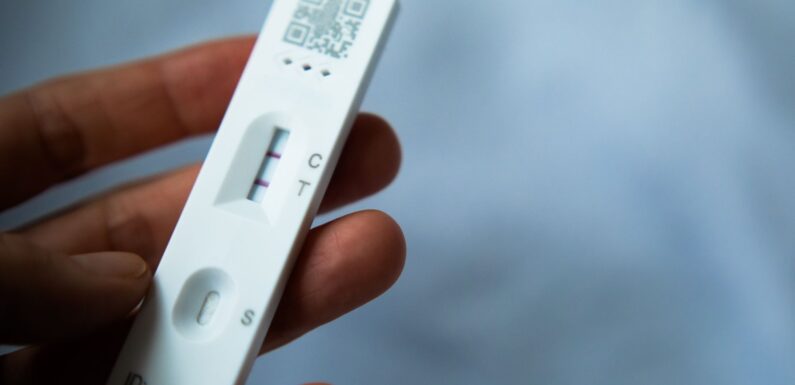
IN the almost four years since Covid-19 reared its head, we've all been primed to look for certain symptoms that indicate we've got the bug.
But as strains of the virus mutate and new strains drive up case numbers, it can be hard to pinpoint what telltale signs to watch out for.
The latest one to dominate the UK and other countries is the BA.2.86 strain, nicknamed ‘Pirola’ by scientists.
With NHS vaccines director Steve Russell calling it the “most concerning variant since Omicron”, it prompted health officials the autumn jabs roll out forward as a "precautionary measure".
Despite fears the new variant would cause another health crisis, UK Health Security Agency (UKHSA) officials said in September that Pirola didn't seem to be more severe than Omicron or more resistant to immunity from jabs.
And so far, it doesn't seem to have driven up hospitalisations.
Read more on Covid-19

Millions at risk still haven't had flu and Covid jabs – are you eligible?

From exercise to meditation, eight ways to boost your immune system this winter
The UKHSA's most recent report indicated that case numbers decreased by 8.7 per cent in the week leading up to November 2, while hospitalisations also fell.
But people are still getting ill from Covid-19 and health experts have warned that people should keep their eyes peeled for a specific set of symptoms caused by Pirola.
The variants can cause two specific two specific changes to people's faces that weren't seen when previous strains reigned rampant, according toDr Johannes Uys, a GP from Broadgate General Practice.
He told the Express that “unlike most previous variants, Covid Pirola can cause visible facial symptoms".
Most read in Health

Tragic Brit girl, 2, dies on holiday after docs ‘missed her burst appendix’

Huge breakthrough as brain tumours could soon be detected using easy home test

How sit-ups are total waste of time if you want a flat tummy & 3 moves that do work

I found amazing link with family of son’s heart donor… we’re friends for life
These are:
- eye irritation
- a skin rash
Previous reports have suggested that Pirola can also more cold-like symptoms that we were used to seeing with other variants.
Dr Erick Eiting from Mount Sinai Beth Israel Hospital in New York, US, told NBC news: "It’s a lot of congestion, sometimes sneezing, usually a mild sore throat."
He explained that people tend to be struck with a sore throat first, before their nose getting bunged up.
Meanwhile, Patient.info said some less common symptoms caused by Pirola include skin rashes, changes in the mouth or tongue – such as ulcers or soreness – sore fingers or toes, diarrhoea and itchy eyes.
What are the most common Covid-19 symptoms?
The ZOE Health Study has kept track of the most common symptoms caused by Covid-19, tracking how they've changed over time and what new symptoms emerge.
It said that symptoms flagged in 2020 as 'typical' of the virus – such as loss of smell, shortness of breath and fever – are much less common these days.
Instead, it said the top 10 symptoms reported by people with positive Covid-19 tests are:
- a sore throat
- a runny nose
- a blocked nose
- sneezing
- a cough without phlegm
- a headache
- a cough with phlegm
- a hoarse voice
- muscle aches and pains
- an altered sense of smell
Brits urged to get jabbed before hols
Some 8.6million eligible Brits have have had their Covid booster.
But millions of those at risk of serious illness — including pregnant women and those with ongoing health conditions — have yet to take up their free dose.
Dr Mary Ramsay, of the UKHSA, said: “Nobody wants to miss out on the festive celebrations with their friends and family this winter and the vaccines provide the best protection.
“I urge all those eligible to join the millions of others who have taken up their free vaccine offer to get winter strong.
“Don't put it off, book your appointment today and arm yourself against the risk of severe illness.”
Who is eligible for a Covid vaccine?
Those eligible for an autumn Covid vaccine include:
- residents in a care home for older adults
- all adults aged 65 years and over
- persons aged 6 months to 64 years in a clinical risk group, as laid out in the Immunisation Green Book, COVID-19 chapter (Green Book)
- frontline health and social care workers
- persons aged 12 to 64 years who are household contacts (as defined in the Green Book) of people with immunosuppression
- persons aged 16 to 64 years who are carers (as defined in the Green Book) and staff working in care homes for older adults
Source: The NHS
The NHS says you might be able to look after yourself at home if you get diagnosed with Covid.
You're no longer required to do a rapid lateral flow test if you have symptoms.
Read More on The Sun

I budgeted £100 each for my kids' Xmas gifts – trolls say they 'have nothing'

Full list of cold weather payments to help you through the winter
But if you or your child test positive for Covid-19, it advised you:
- try to stay at home and avoid contact with other people for three days after the day the test was taken if you or your child are under 18 years old – children and young people tend to be infectious to other people for less time than adults
- try to stay at home and avoid contact with other people for five days after the day you took your test if you are 18 years old or over
- avoid meeting people who are more likely to get seriously ill from viruses, such as people with a weakened immune system, for 10 days after the day you took your test
Source: Read Full Article
